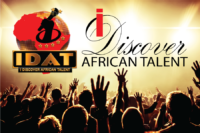
French Togoland became Togo in 1960. Gen. Gnassingbe EYADEMA, installed as military ruler in 1967, ruled Togo with a heavy hand for almost four decades. Despite the facade of multi-party elections instituted in the early 1990s, the government was largely dominated by President EYADEMA, whose Rally of the Togolese People (RPT) party has maintained power almost continually since 1967 and maintains a majority of seats in today’s legislature. Upon EYADEMA’s death in February 2005, the military installed the president’s son, Faure GNASSINGBE, and then engineered his formal election two months later. Democratic gains since then allowed Togo to hold its first relatively free and fair legislative elections in October 2007. After years of political unrest and condemnation from international organizations for human rights abuses, Togo is finally being re-welcomed into the international community.
Capital: Lomé
Government: Republic under transition to Multiparty Democratic Rule
Economy:
- Suffers from anemic economic growth and depends heavily on both commercial and subsistence agriculture, which provides employment for a significant share of the labor force.
- Among the world’s largest producers of phosphate.
Population: 6.8 million (UN 2011)
Land Size: 56,785 sq km (21,925 sq miles)
Major Ethic Groups:
- African (37 tribes; largest and most important are Ewe, Mina, and Kabre): 99%
- European and Syrian-Lebanese: < 1%
Religions:
- Christian: 29%
- Muslim: 20%
- indigenous beliefs: 51%
Language(s):
- French (official, the language of commerce)
- Ewe and Mina (the two major African languages in the south)
- Kabye (sometimes spelled Kabiye)
- Dagomba (the two major African languages in the south)
For more information about Togo, Please visit:
https://www.cia.gov/library/publications/the-world-factbook/geos/to.html

Leave a Reply
You must be logged in to post a comment.